Based on:

Disclaimer:
All the following information is based on the BlueInvest Investor Report, which combines market data with results from an investor survey conducted by BlueInvest. BlueInvest is a European Commission initiative launched in 2019 with the aim to accelerate new ocean-based technologies and solutions to unlock innovation and investment opportunities in the sustainable Blue Economy. It is funded by the European Maritime, Fisheries and Aquaculture Fund (EMFAF).
SHIPPING & PORTS
Definition for the sector
The shipping and ports sector covers the transportation of freight and passengers by water, and all the activities and infrastructure that enable it. Shipping is indissociable from ports and vice versa, as maritime transport must start and end at a port, and ports are designed to receive merchant vessels and handle their cargo and/or passengers.
'Shipping' encompasses the following subsectors: passenger transport (tourism or commuting services), freight transport (transport of any type of good), and other transport-related services (e.g. ship management). Both passenger and freight transport can be segmented according to the type of water environment (sea, coastal and inland).
'Ports' are crucial infrastructures of strategic importance that support significant flows of goods and people. They vary in size and scope, from very large ports (hubs) down to small or regional ports. 'Ports' encompasses the following subsectors: port development & construction (the erection of new ports and/or expansion of existing ones), cargo and warehousing/ terminal operations (the handling, warehousing and storage of cargo) and other port services (provision of port services like mooring, towage and onshore power supply to ships).
DDC Strategy - Digitalize, Decarbonize, Circularise
The notion of sustainable shipping and ports is based on two key concepts: 'green shipping' and 'green ports'. 'Green shipping' seeks to implement more sustainable ship operating strategies (e.g. by using cleaner fuels and optimising routes). The latter seeks to transform port processes, structures and policies to lessen their negative environmental and climate impact (e.g. by adapting infrastructure to the rising water levels, digitising operations, promoting higher transparency in sustainability reporting, powering industry with renewable energy sources and electrifying port infrastructure).
Fórum Oceano Services for the sector
Business development and internationalization: market intelligence services; organization of business missions and matchmaking; support for investment initiatives; creation of ESG entrepreneurship and business acceleration programmes; support for business internationalization.
Business acceleration, entrepreneurship, digitalization and ESG innovation: implementation of European and extra-European projects focused on innovation ecosystems and networks; support services for the creation of ESG business models; ESG impact assessment services for companies and technologies; support for business financing; support for access to infrastructures for testing ESG technologies, products, and services.
Training, education, and literacy: Creation of technical and higher education training solutions; Development of blue literacy initiatives linked to ESG youth entrepreneurship and knowledge of ESG blue economy professions.
Organizing events and actions to communicate the ESG blue economy: Disseminating knowledge and good practices, fostering collaboration between stakeholders, and highlighting emerging opportunities in the ESG blue economy.
Strategic studies and public policy: Conducting strategic studies to define municipal, regional and national blue economy strategies.
Value Chain

Key Innovations and Technologies
| Innovation | Description | Value Proposition |
|---|---|---|
| Smart port technologies | Automation, service integration, digitisation and data-driven techniques in combination with technologies such as the internet of things (IoT), big data and AI for port and ship infrastructure. These technologies aim to analyse data retrieved by sensors installed in the port/ship and apply predictive analytics to support decision-making (e.g. predicting the estimated time of ship arrivals, managing vessel delays caused by adverse weather conditions, etc.). Smart port technologies also include the use of blockchain in port contracts to record transactions and track information. | Smart technologies facilitate multilevel decision-making and improve safety and security both onboard ships and for port infrastructure, thanks to applications such as operational analytics, sustainability reporting, maintenance prediction, crew management, route enhancement, roll on/roll off shipping optimisation and freight pattern analysis. Blockchain ensures transparency through reliable data storage. |
| Digital twin in the shipping & port ecosystem | A dynamic digital representation of a port complex, terminal, or ship that describes its characteristics and properties as a set of equations. A digital twin includes both the hardware to acquire and process the data and the software to represent and manipulate it. | Digital twins are used to optimise port call operations and allow all operations in a port complex and onboard seagoing vessels to be monitored without the need to install a hardware system. |
| Port robotics | Automated solutions capable of performing repetitive tasks that do not require specific skills. The main applications include security and inspection tasks, which can be done by robots or drones moving through the port to track facilities, equipment or cargo in real time, and automated transport or loading tasks, such as container handling and warehouse management, which can be done by automated guided vehicles (AGV). | The use of robots allows workers to avoid exposure to life-threatening conditions during maintenance and inspections, and increases efficiency levels by accelerating risk assessments through real-time remote monitoring. |
| Ship electrification and sustainable propulsion systems | Ship electrification consists in the use of battery systems and energy storage solutions for ship propulsion to increase energy efficiency and reduce negative environmental impact. Other sustainable propulsion systems include the use of alternative sources of energy such as biofuels, wind energy (e.g wind-assisted propulsion), tidal energy, solar power and e-fuels like methanol, ammonia and green hydrogen. | The use of these solutions has a positive impact on emissions, marine noise, and energy efficiency, recovery and storage without affecting vessel productivity. |
| Green port ecosystems | Green port ecosystems refers to the implementation of infrastructure and practices to decarbonise logistics and shipping activities in ports. These include, among others, the use of renewable energy sources, energy efficiency measures, smart technologies to aid transportation and delivery, and shore-side electricity provision for docked ships. | Green port ecosystems are key for the renewable energy transition and can have a significant positive impact on the reduction of GHG emissions. |
| Decarbonising industries active in and around ports | The decarbonisation of industries that operate within ports such as shipbuilding, chemicals, food, construction and electricity. Routes to decarbonisation include using renewable heat to run industrial processes, improving energy efficiency, electrifying processes, using green hydrogen as a feedstock, employing circular production models and re-using waste heat. | Decarbonisation drives emission reductions and energy efficiency in and around ports. |
| New infrastructures and products | Research and development of new infrastructures and products to better manage cargo operations. Examples include an underwater hyperloop, which uses magnetised tracks to move goods faster through a vacuum-sealed tunnel, offshore container terminals and foldable containers that aim to save space on vessels. | Foldable containers reduce emissions and costs thanks to space maximisation; underwater hyperloops and offshore terminals make cargo operations more efficient by reducing congestion and emissions. |
Shipping & Ports Markets Data


Blue Economy Barometer


Hub Azul Dealroom


Euronext Lisbon


Blue Invest

Fórum Oceano is the managing entity of the Portuguese Sea Cluster, certified and recognised by the Ministry of Economy and the Sea, the Ministry of National Defence and the Ministry of Planning and Infrastructure.
With the support of

Headquarters
Delegation
© 2026 Fórum Oceano. All rights reserved. Developed by Yacooba Labs






























































